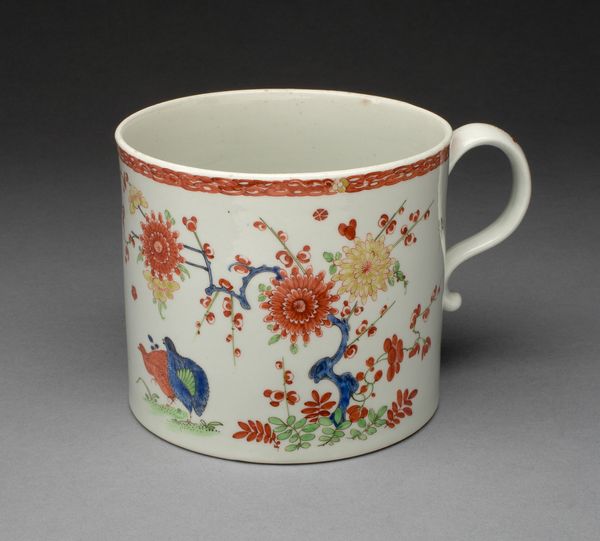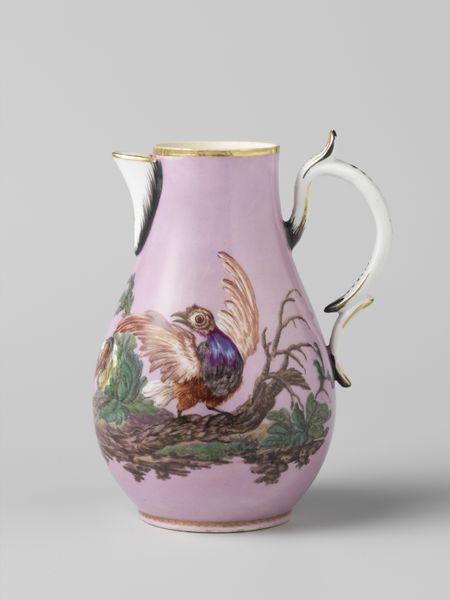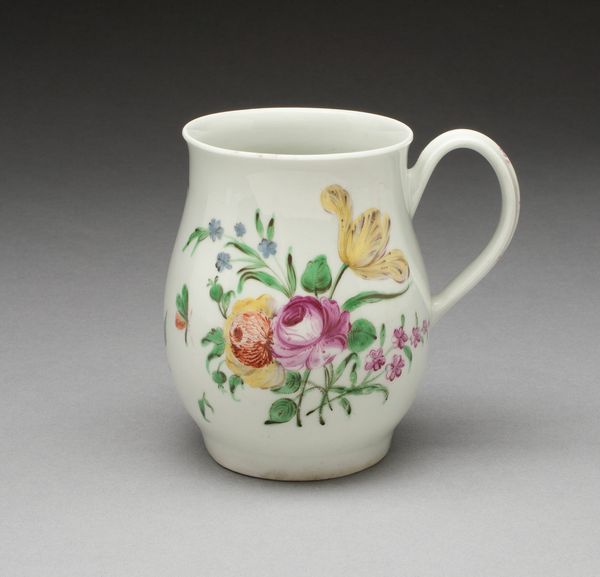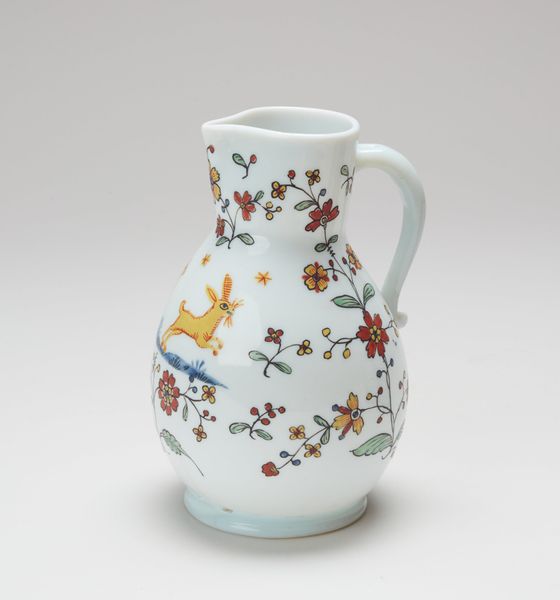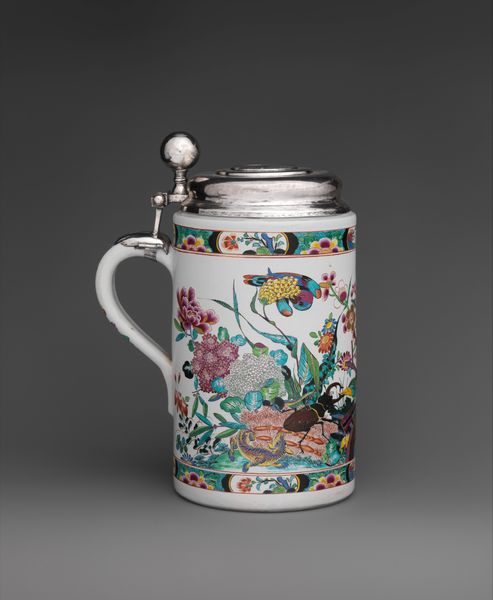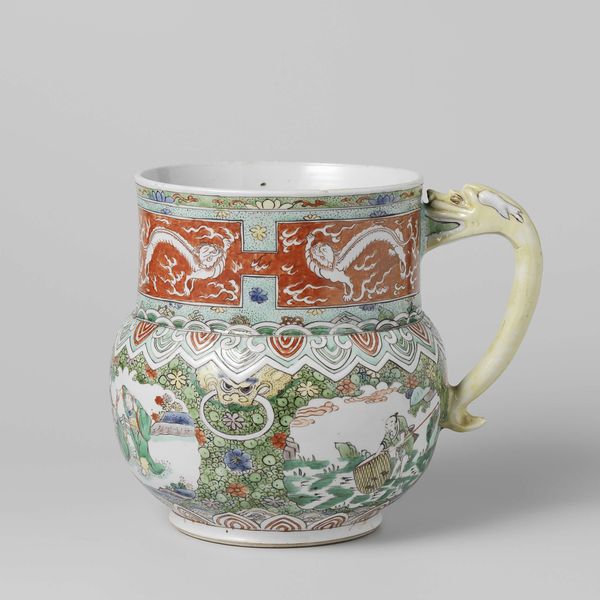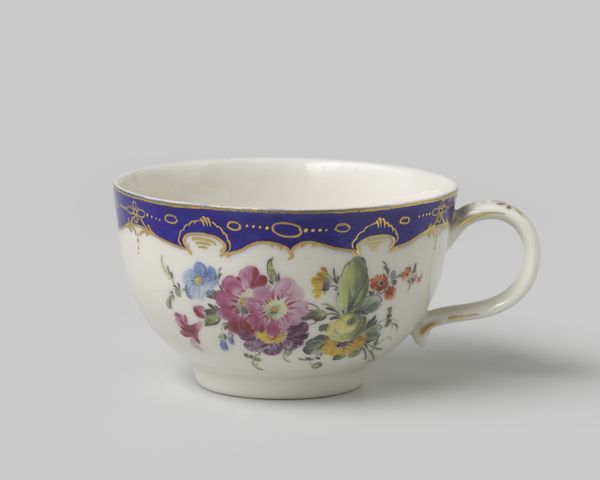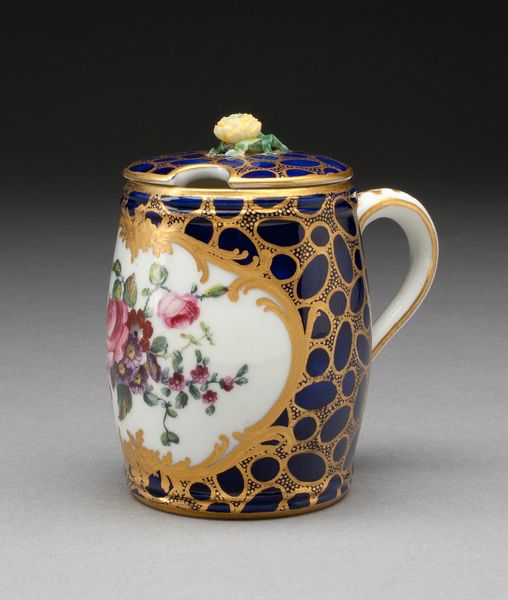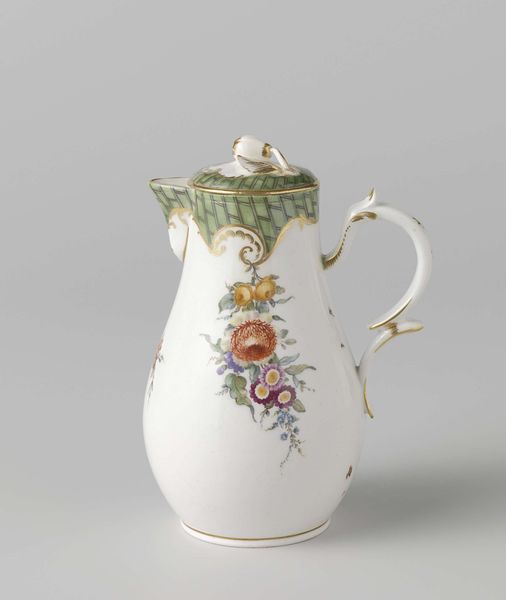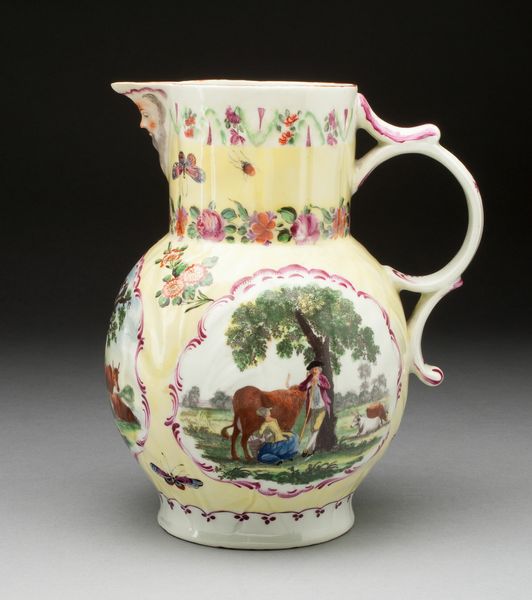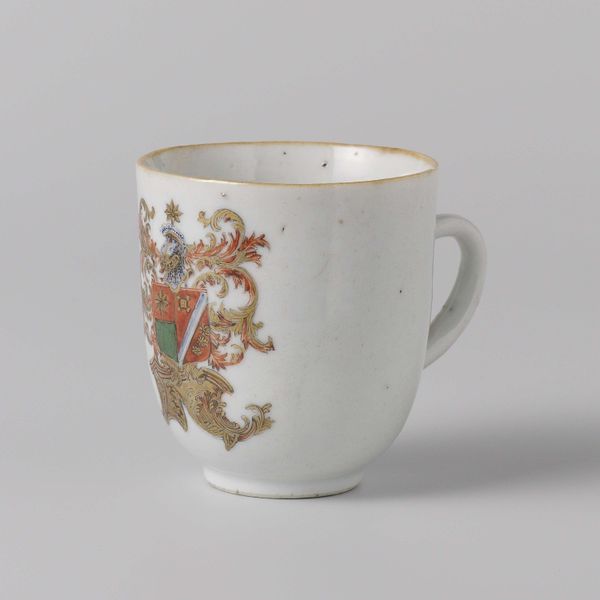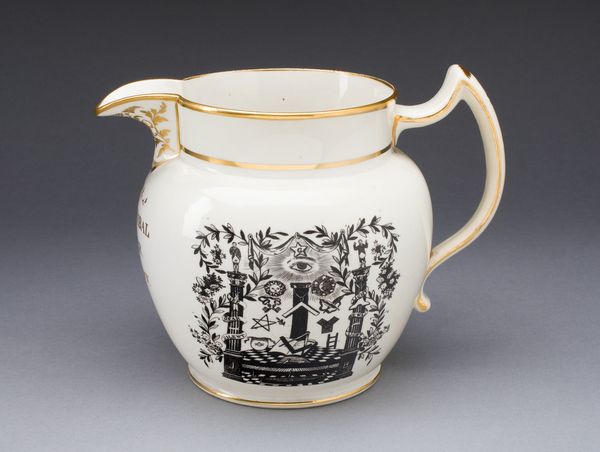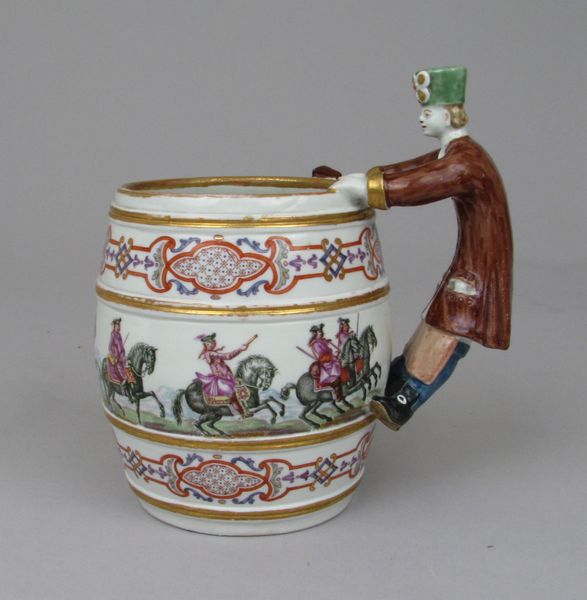
ceramic, porcelain
#
ceramic
#
porcelain
#
ceramic
#
decorative-art
#
rococo
Dimensions: H. 15.4 cm (6 1/16 in.); diam. 10.4 cm (4 1/6 in.)
Copyright: Public Domain
Curator: Here we have a beautiful example of 18th-century decorative art: a porcelain mug created between 1765 and 1775 by the Worcester Royal Porcelain Company, currently held in the Art Institute of Chicago. Editor: My first impression is how vibrant it is! The bright green and the colourful birds really pop against the white porcelain. It feels quite whimsical, doesn't it? Curator: It certainly does. The Rococo style, with its emphasis on ornamentation and asymmetry, is quite evident here. These details reflected the lifestyle of the wealthy class at that time. These visual representations spoke volumes about identity. The elaborate decoration speaks to wealth, status and colonial trading systems. Editor: Absolutely. And think about the skill involved in producing such a piece. From sourcing the porcelain itself to the firing process, to the meticulous painting of those intricate bird designs, and finally to applying the gold highlights, each step would require specific knowledge and trained labor. We should consider the role of those unnamed artisans! Curator: Exactly! Let's not forget that behind every object lies a network of makers. By that period, ceramics have also a long history. How has this art object adopted such techniques? How has porcelain making in the context of British colonialism reshaped the way that the art objects and materials are perceived in British society? Editor: Also, what was it like to drink from? It seems as though it would be only for a certain class of people. Was the design more about decoration and taste or daily use? Curator: That brings up an interesting point about domesticity. Servingware were common indicators of household social standings. But also it should also be used for having afternoon tea! The Rococo was about celebrating intimacy, femininity and care. These birds may suggest one ideal lifestyle from the artist to the beholder as well! Editor: Thinking about those who produced and consumed this mug gives it a whole new depth, and it seems quite fragile to our touch in today's industrial scale of ceramics. Curator: Precisely, a tangible relic connecting us to an intricate past and present in production and aesthetics!
Comments
No comments
Be the first to comment and join the conversation on the ultimate creative platform.
